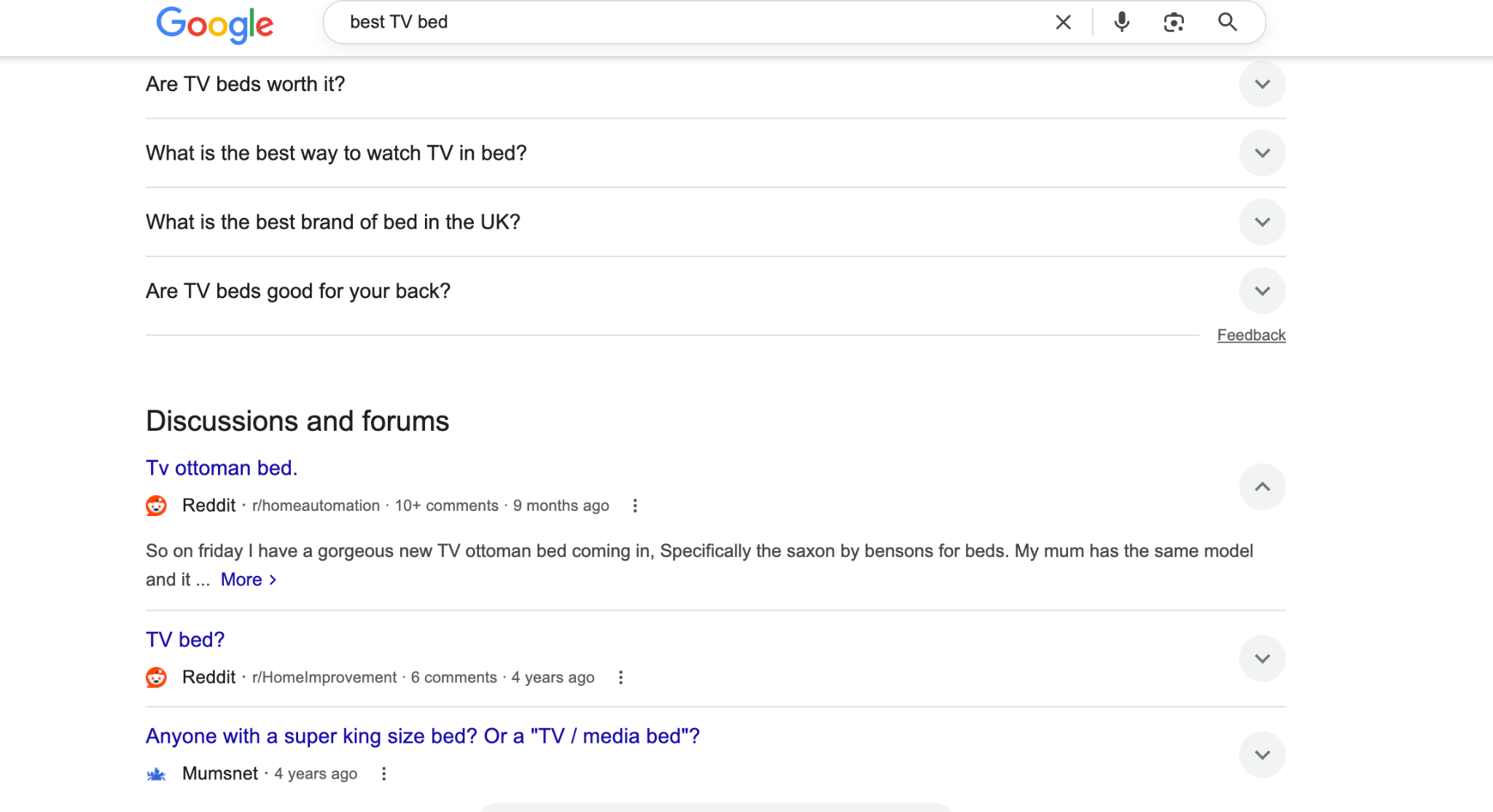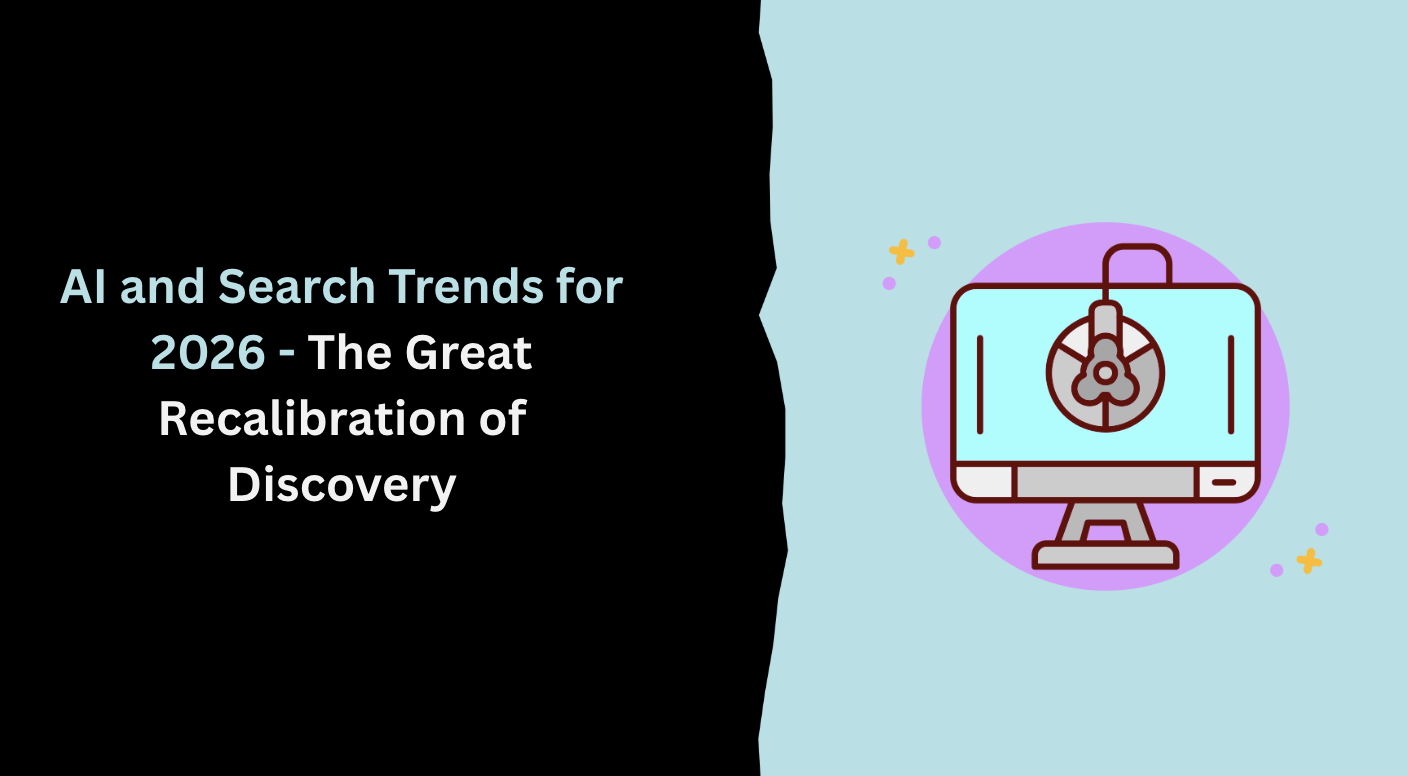Table of Contents
The paradigm shift
As 2026 planning takes shape, one truth is clear: the next two years will redefine how growth happens.
After a year marked by elections, economic resets and the mainstreaming of AI, the foundations of global demand are shifting. Economic instability is baked in and, as such, decision-making is becoming data-driven, discovery is becoming conversational, and competition is being rewritten in real time.
The pace of change in search mirrors this transformation. Search is no longer a static list of blue links; it’s a dynamic ecosystem of AI agents, voice assistants, and generative engines competing to predict intent before users even articulate it. For marketing leaders, this represents more than a technical shift; it’s a structural one. The old distinction between paid and organic reach is eroding, replaced by a new focus on visibility across intelligent systems. The old silos are being broken in organisations and, crucially, in consumers' pockets, metaphorically (pinched budgets) and literally, with the sum of all human knowledge and an answer engine at their fingertips.
From search engines to answer engines
For two decades, growth online was dictated by algorithms that rewarded optimisation. Marketers played the game: keywords, backlinks, meta descriptions. The rules were technical but clear.
That era is ending. Platforms like ChatGPT, Perplexity, and Gemini are transforming search from query and click to ask and receive. The results page is dissolving into a single, synthesised response. Users aren’t browsing; they’re conversing.
This move from search engines to answer engines is seismic. It changes who controls visibility, how trust is signalled, and where commercial opportunity lives. For CMOs and marketing directors, it means the focus must shift from ranking high to being cited, referenced, and used by AI systems that mediate the new flow of attention.
Generative Engine Optimisation (GEO), the emerging discipline of structuring data and content for AI retrieval, will sit alongside SEO as a new strategic necessity.
The convergence of paid and organic
The traditional divide between brand and performance is collapsing. AI-driven ecosystems blur the boundaries between discovery, engagement, and conversion. A user journey could start on TikTok, interact via paid, and a sale could close by a direct visit.
Paid channels, once isolated from organic strategy, are becoming crucial testing grounds for message resonance, audience segmentation, and creative intelligence. Organic performance, meanwhile, is shaped by how those signals feed back into the data models that train AI search systems.
By 2026, the most effective marketing strategies will no longer treat paid and organic as distinct lanes. They will operate as a feedback loop: paid campaigns generating data that enhances organic authority, and organic visibility lowering acquisition costs through brand familiarity.
In this context, growth becomes less about spend, more about learning velocity. The brands that thrive will be those using paid to teach the algorithm, not just chase the click.
Building AI-ready visibility
To adapt, marketers must view search as a living intelligence network. That means rethinking both content and structure.
1. Structure for machines, not just humans.
AI systems rely on structured data, schema markup, and clear topical authority. Brands that communicate meaning semantically, not just stylistically, will be surfaced more often in AI responses.
2. Build trust signals everywhere.
As AI assistants weigh authority, first-party data, transparency, and verified expertise will become essential ranking factors. Trust isn’t declared; it’s inferred.
3. Use paid insights to guide organic intent.
Your ad data, click patterns, engagement, and conversion context offer early indicators of where organic opportunity will lie. Treat it as intelligence, not expense.
4. Optimise for questions, not keywords.
Conversational search thrives on relevance. AI tools interpret context. Marketers who create content that directly answers, rather than merely matches, user intent will dominate answer engines. And, by the way, if you want questions and answers, try Reddit:

Beyond visibility - growth through foresight
By the time this shift matures, the distinction between search marketing and strategy will be gone. AI isn’t just automating visibility; it’s transforming foresight.
The marketers who lead the next era of growth will invest not just in presence, but in prediction, using real-time data to anticipate change before it arrives. They’ll see AI not as an efficiency tool but as an early-warning system: a way to understand cultural signals, competitive shifts, and customer intent before they crystallise in the market.
2026 won’t reward the biggest budgets. It will reward the clearest thinkers, the ones using intelligence to act decisively while others deliberate.
Growth is being redefined. The question isn’t whether you’ll adapt, but whether you’ll own the future of your market while others are still catching up.
Get in touch today
complete the form below for an informal chat about your business






.png)

